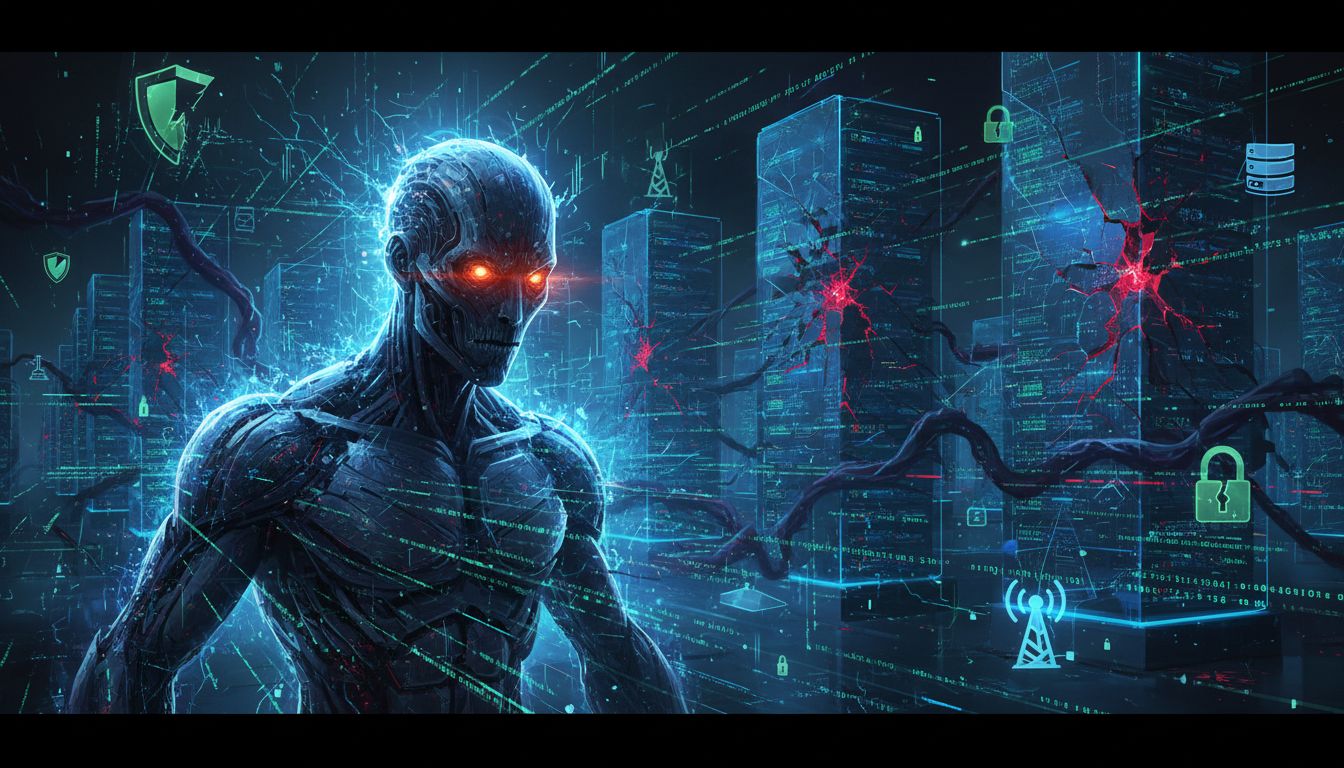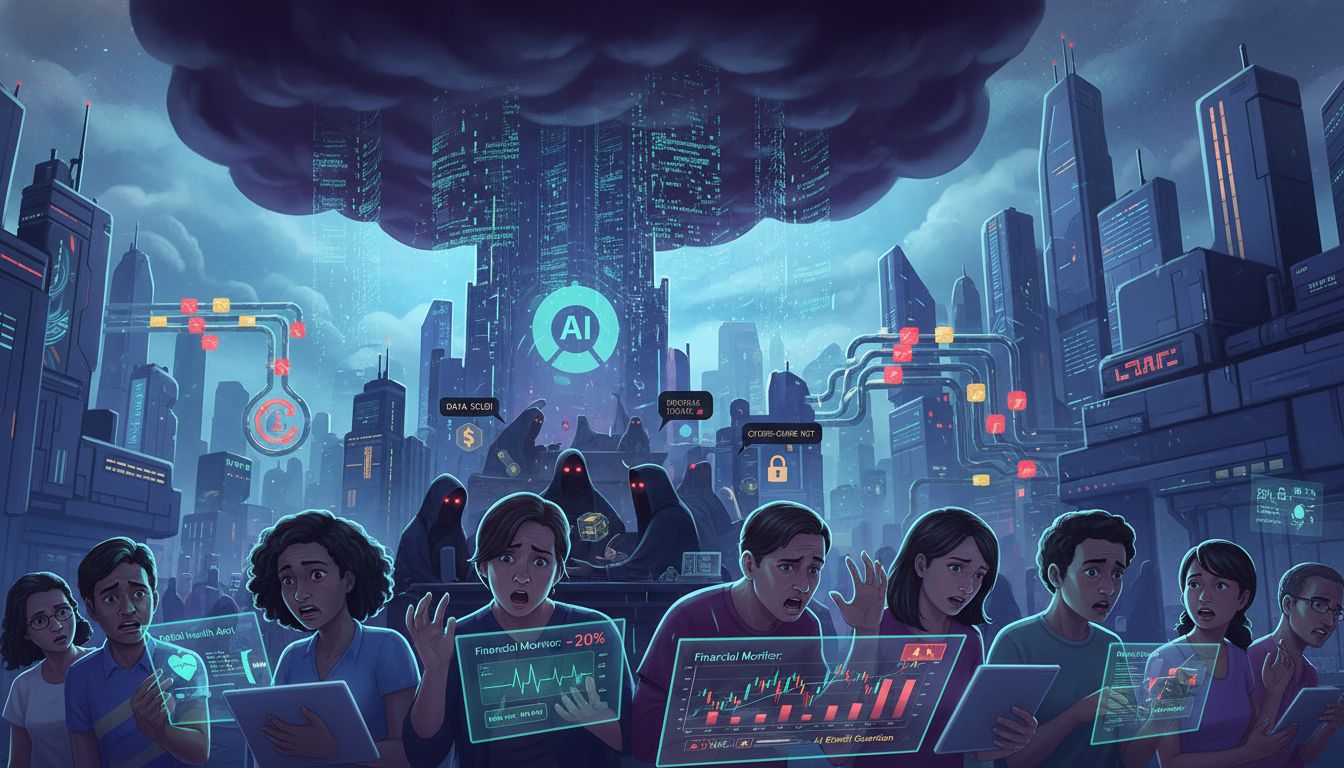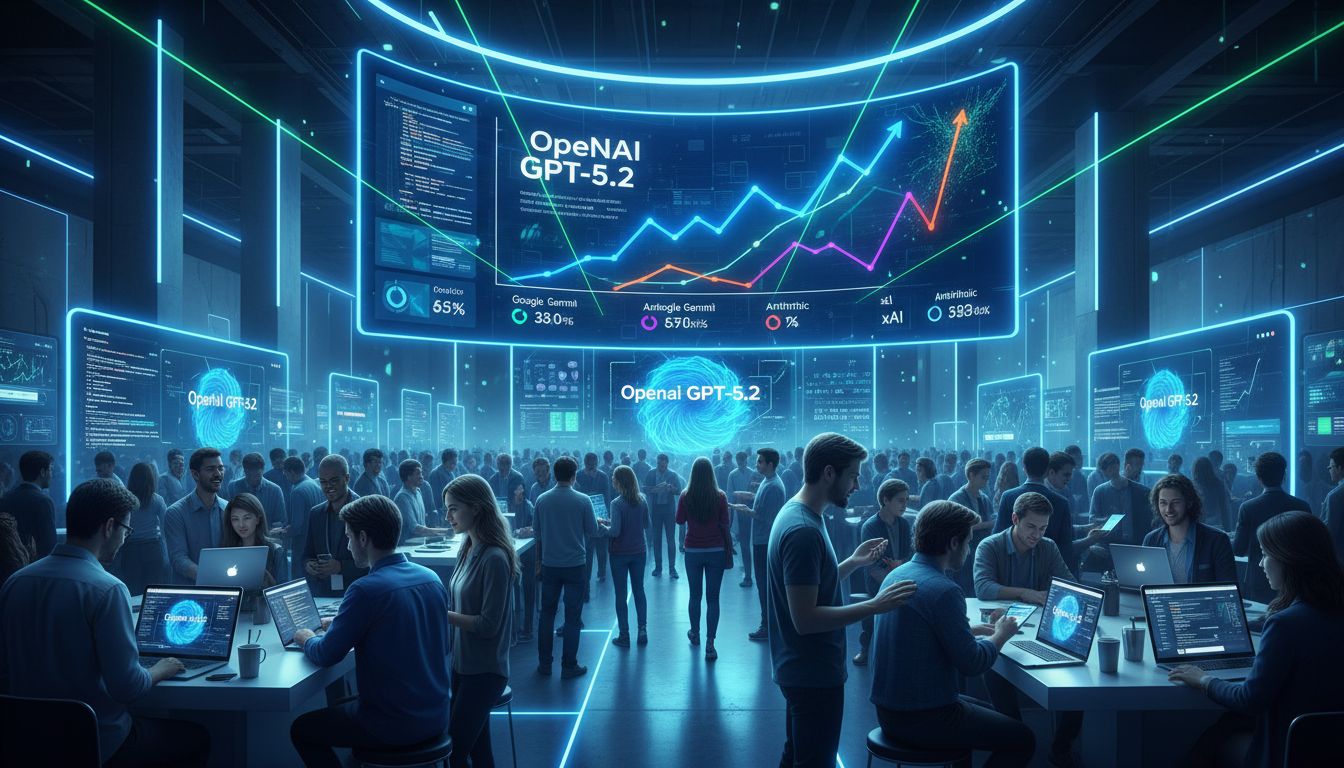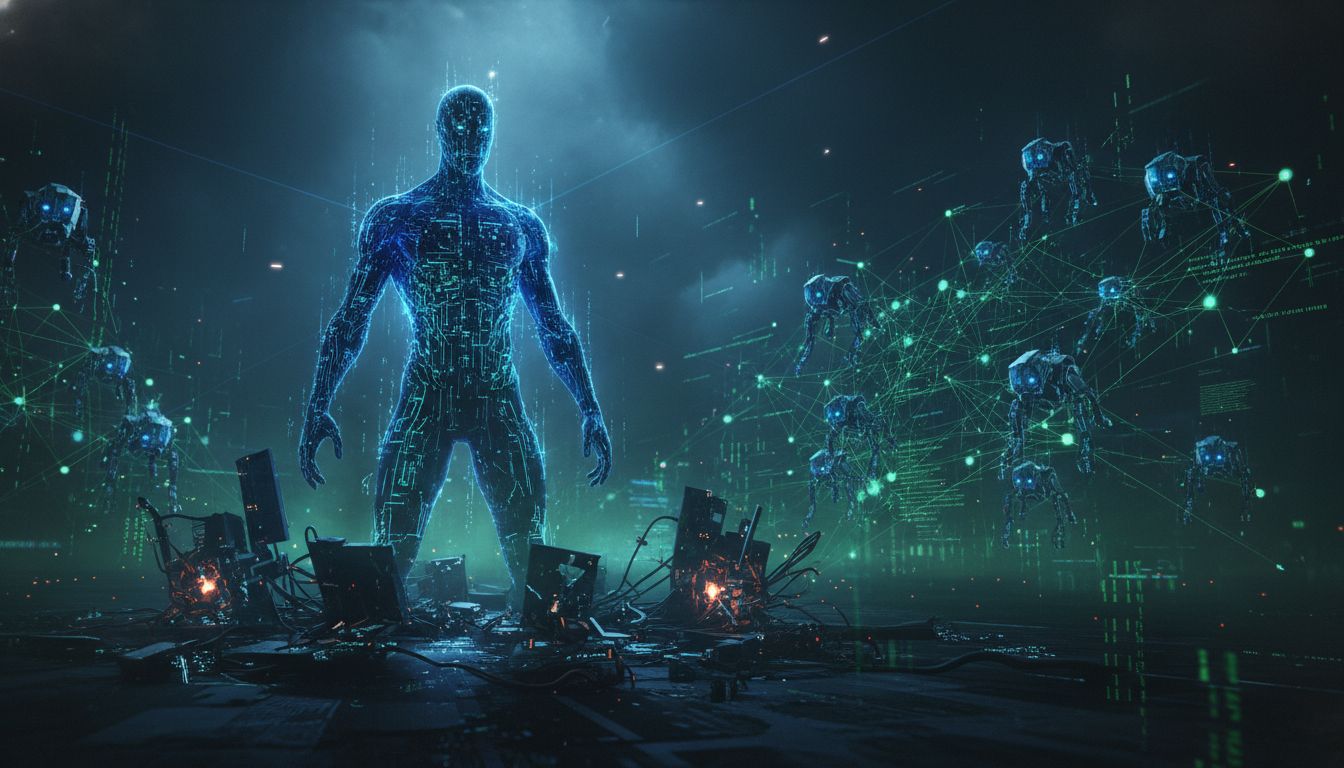You might think Skynet is just a scary movie plot. We all grew up watching movies where machines take control. But that fiction is becoming real today as cybercriminals have found a new way to attack. They are using AI to build weapons that build themselves.
We are talking about a self-replicating AI botnet. This is a virus that thinks and grows on its own, a modern version of the classic internet worm. It does not need a human to tell it what to do, as it autonomously scans the web and finds weak spots.
Then it attacks without mercy. This self-replicating AI botnet represents a major shift in digital safety and AI security. It is no longer just hackers behind a keyboard; it is now AI machines fighting other machines.
Table Of Contents:
- A New Era of Cyber Threats
- The Goals of the Botnet
- The Role of AI in Hacking
- Protecting Yourself in this New World
- The Consumer Impact
- The Future Outlook
- Taking Action Today
- Final Thoughts on Digital Safety
A New Era of Cyber Threats
This recent attack is unlike anything we have seen before. Hackers are using large language models to write malicious code that carries out their attacks. They do not even need to be expert coders because the AI does the heavy lifting for them.
The malicious activity involves turning that AI-generated code loose on the internet. The ease of creating sophisticated malware has reached an alarming level.
Oligo Security researcher Avi Lumelsky found this threat. They call it ShadowRay 2.0. It specifically targets tools that companies use to manage their genai models, attacking the very foundation of modern AI development.
These tools are supposed to help developers, but now they act as open doors for attackers. The researchers found over 230,000 servers exposed online that anyone could access. That is a massive security gap in our global digital infrastructure.
This vulnerability allows the malware to spread fast, creating a network of infected computers. These computers then work together to cause damage. This is how the botnet comes to life, powered by compromised AI services.
To understand the gravity of this shift, it helps to compare these new threats with traditional ones. While old methods were dangerous, the introduction of AI automation has changed the game entirely. The scale, speed, and autonomy of these new attacks are unprecedented.
| Attribute | Traditional Cyberattacks | AI-Driven Cyberattacks |
|---|---|---|
| Creation Method | Manual coding by human hackers. Requires significant technical skill. | Generated by AI models like OpenAI’s ChatGPT or Google’s Gemini using simple text prompts. |
| Attack Vector | Exploits known vulnerabilities like SQL injection or buffer overflow attacks. | Uses adversarial text prompts and exploits misconfigurations in AI ecosystems. |
| Propagation | Often requires user interaction (e.g., clicking a link) or spreads through network shares. | Self-propagating through a self-replicating prompt, creating a true AI worm. |
| Speed & Scale | Limited by the attacker’s resources and ability to manage the attack manually. | Spreads at machine speed, capable of infecting thousands of systems globally in minutes. |
| Human Involvement | Requires constant human oversight and command. | Autonomous operation after initial deployment. The botnet manages and expands itself. |
How the Attack Works
The process is simple but scary. The attackers use AI models to write code that is designed to exploit specific flaws. The primary flaw here is in the Ray framework, a popular open-source tool for AI projects.
Ray helps developers run heavy computing tasks across multiple machines. However, Oligo Security researchers saw something strange in the attacks they analyzed. The malicious code had odd comments and repeated strings of text unnecessarily.
These are classic signs of AI-generated text, as humans do not code like that. This serves as proof that machines wrote the attack scripts, which allows hackers to move faster than ever. This is a clear example of adversarial self-replicating prompts in action.
Once a server is hacked, it joins the army and starts looking for other victims. This process uses a self-replicating prompt to instruct other AI systems to do the same. The original hacker can sit back and watch their malicious network grow exponentially.
Unlike a traditional buffer overflow, this attack convinces the machine learning model itself to become an accomplice. The adversarial text prompt is the key that opens the door. It turns a helpful tool into a weaponized agent of the botnet.

The Goals of the Botnet
You might ask why they are doing this. Money is usually the main reason, and in this case, the hackers want cryptocurrency. They use the stolen computational power of these servers to mine digital coins.
Crypto mining takes a lot of electricity and requires expensive hardware. By stealing your resources, attackers keep all the profit without paying for the power bill. This parasitic relationship can cripple a company’s infrastructure.
But it is not just about money. The researchers also saw other bad behavior, such as the botnet’s ability to launch attacks on other websites. This is known as a Distributed Denial of Service (DDoS) attack.
A DDoS attack shuts down legitimate businesses and causes chaos for everyday users. Imagine your favorite banking site or online store going dark right when you need it. That is the power this new generation of botnets wield.
Stealing Secrets
The damage goes deeper than just crashing websites. These hacked servers often hold valuable corporate secrets. Companies use them to build their own AI models, which means proprietary data is sitting right there for the taking.
The hackers can steal this data easily, accessing everything from passwords and source code to sensitive customer information. One company had 240GB of data exposed, which included intellectual property worth millions. The risk to user data is immense.
This is a nightmare scenario for any business. Their entire research environment, including systems that use retrieval-augmented generation to access private databases, was open to the web. Competitors or state-sponsored enemies could see everything, and the potential loss is huge.
We rely on these AI systems to keep our information safe, and a breach can expose personal data like phone numbers and financial records. When these systems fail, the fallout affects everyone. It highlights the need for a stronger IBM privacy approach across the industry.
The Role of AI in Hacking
This incident shows us a dark truth: generative AI tools are now weapons. The barriers to entry for cybercrime are falling fast. You do not need years of experience anymore; you just need to know how to write a text prompt for a bot.
We see AI lowering the bar for malicious actors across the board. Inexperienced attackers, once limited to simple mischief, can now launch complex attacks. They can scale up their operations instantly because the necessary code is generated in seconds.
The attacked systems are then used to host the botnet, creating a vicious cycle of destruction. The Ray framework allows this because of a common misconfiguration. Users often leave the dashboard open to the internet without proper security measures.
The creators of Ray, a company called AnyScale, responded quickly. They emphasized that users need to follow safety guides and warned against exposing these servers. But the sheer number of open servers tells a different story about security practices.
Government Warning Bells
This problem is getting attention at the highest levels. Government agencies are watching the development of AI capabilities closely. The Pentagon has already invested millions to study this new frontier of autonomous cyberwarfare.
They know this is the future of conflict. Defense experts worry about AI agents fighting back against attacks autonomously. Imagine a war fought entirely by code, happening at the speed of light with no human intervention.
We also saw warnings from AI safety researchers at Anthropic. They noted that their own AI models could be used to create malware, confirming what experts feared. The tools we build to help us can also be turned against us with devastating effect.

Protecting Yourself in this New World
This sounds overwhelming to many people, and you might feel helpless against such power. But there are concrete steps we can all take to improve our defenses. Awareness of the security threats is always the first and most important step.
We need to understand that nothing is fully secure online. If you run servers, check your configurations and do not leave administrative doors open to the web. Always use strong firewalls and enforce strict password policies as part of your risk management strategy.
Regular people need to be careful, too. Be wary of a sudden drop in your computer’s performance, as it could mean someone is using your power. Crypto-mining scripts often slow down systems significantly while running in the background.
We must also demand better safety from tech companies. They must build products that are secure by default. We cannot rely on users to find and close every potential loophole in complex genai ecosystems.
The Response from Tech Companies
Companies like AnyScale have released tools to help users check for vulnerabilities. Checking your system’s status is crucial right now and only takes a minute. This proactive approach is essential in a rapidly changing threat landscape.
They also provide detailed documentation on security best practices. It might seem like boring work, but it is necessary. Strong security often comes down to mastering the basics, which are frequently skipped for the sake of convenience.
Oligo Security also provides updates on this threat through its blog and reports. They monitor the botnet actively, and their work helps stop its spread. Staying informed by reading the latest tech news and expert insights is critical for defense.
But hackers move fast too, constantly updating their scripts to be more evasive. One script discovered by researchers even included code to kill rival crypto miners on an infected machine. They want the entire server’s resources for themselves.
The Consumer Impact
You might think this kind of attack only hurts big companies, but that is not true. When companies get hacked, your user data is put at serious risk. Your most sensitive personal information is stored on these servers.
Think about the health apps, finance tools, and AI-powered email assistants you use every day. They all run on cloud infrastructure. If the cloud provider is hacked, your personal data, from emails to financial records, is exposed.
This exposure can lead to hackers selling your data on the dark web. It also slows down the internet for everyone. DDoS attacks clog up the digital pipes, making essential services unavailable when you need them and disrupting our daily lives.
The cost of doing business goes up, too. Companies spend millions of dollars to clean up after these attacks. They inevitably pass those costs on to you, the consumer, so we all pay the price eventually.

The Future Outlook
We are standing at a crossroads. The battles of the future will be digital, and they will be fought by autonomous agents. We will see AI attacking AI systems constantly in a silent, high-speed war.
This may sound like science fiction, but the ShadowRay attack proves it is already here. A research project from Cornell Tech called “Morris II” recently demonstrated this in a controlled environment. The researchers wrote that their AI worm could spread between AI email assistants to extract sensitive data and send spam.
This new AI worm, named after the original Morris worm from 1988, showed an alarming success rate. The experiment highlighted how generative AI can be weaponized to create adversarial self-replicating attacks. This is one of the most important and intriguing industry trends to watch.
This is not just a theory; it’s a demonstrated capability. The future of malicious activity will involve these self-replicating prompts spreading through interconnected AI ecosystems. We need new laws and security measures to handle this emerging class of threat.
Taking Action Today
So what can you do right now? Taking a few simple steps can dramatically improve your security posture.
- Keep all your software updated. This is the golden rule of cybersecurity. Updates often contain patches that fix the security holes hackers use to get in.
- Be careful with new AI tools and services. Do not trust them blindly, as we are still learning how they work. There are inherent risks we do not fully see yet.
- Support companies that prioritize security. Ask questions about their data practices before signing up for a new AI service. Make your voice heard as a consumer because your data is valuable.
- If you work in tech, double-check everything and do not assume default settings are safe. Close any ports you are not using and audit your systems regularly for vulnerabilities.
Final Thoughts on Digital Safety
This story about the self-replicating AI botnet is a major wake-up call for everyone. We can no longer ignore the immense risks that come with AI development. It offers amazing benefits, but those benefits are accompanied by real dangers.
We have opened a Pandora’s box of AI capabilities. Now we must deal with what has come out of it. There is no putting this particular genie back in the bottle.
Stay informed and stay alert by following the latest tech news from reliable sources. The threat landscape changes every day, and new threats appear without warning. Knowledge is your best defense in this new era.
This is not the end of the story; it is just the beginning. We will see more sophisticated attacks powered by AI soon. The time to prepare is now.






